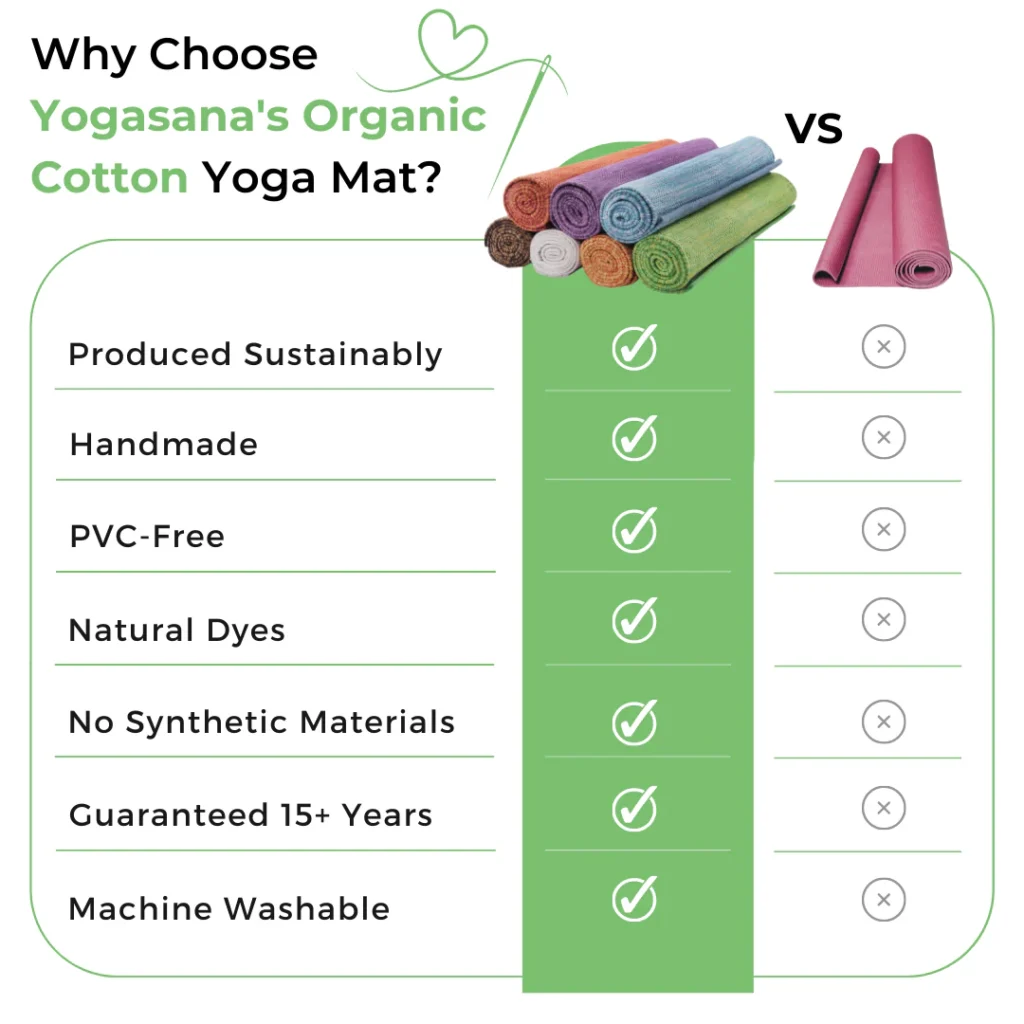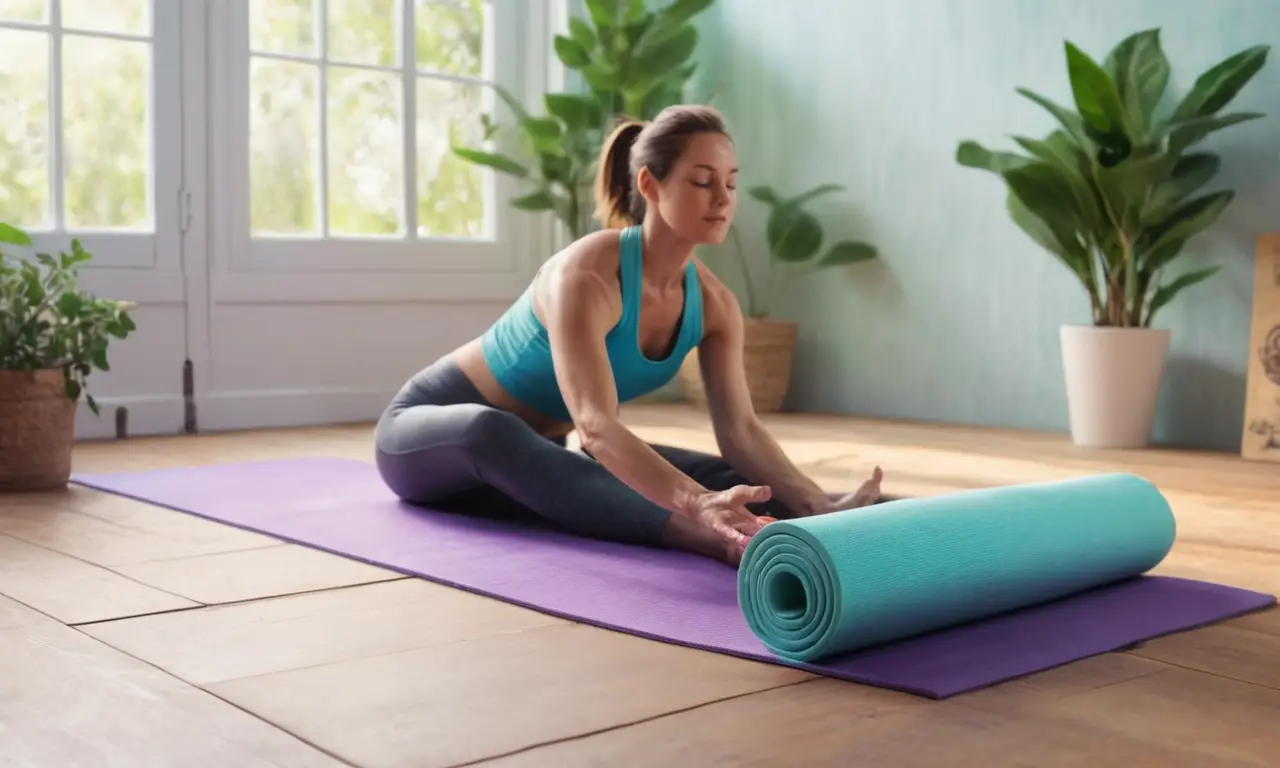
Finding the right yoga mat can significantly enhance your practice. It provides cushioning, grip, and stability, allowing you to focus on your poses and movements. However, not all yoga mats are created equal. When selecting a mat, safety should be a top priority. While many options exist, some materials raise concerns about potential health risks. This article delves into the safety aspects of yoga mats, particularly focusing on PVC yoga mats and exploring safer, eco-friendly alternatives.
This article will examine the potential dangers associated with PVC yoga mats, delve into the benefits of natural rubber and TPE yoga mats as safer alternatives, and provide guidance on choosing a yoga mat that prioritizes both your well-being and environmental consciousness.
Yoga Mat Safety Concerns
Yoga is a practice that emphasizes connection with your body and breath. Using a yoga mat that could potentially release harmful substances into your environment directly contradicts this principle. When selecting a yoga mat, it’s crucial to consider the materials used in its construction and their potential impact on your health. Some common concerns include:
- Chemical Leaching: Certain yoga mat materials can leach chemicals over time, especially when exposed to heat or moisture. These chemicals can come into contact with your skin and potentially be absorbed into your body.
- Skin Irritation: Some individuals may experience skin irritation or allergic reactions from certain yoga mat materials. This is particularly true for people with sensitive skin.
- Respiratory Issues: Volatile organic compounds (VOCs) released from some yoga mats can irritate the respiratory system, potentially triggering asthma or other breathing difficulties.
PVC Yoga Mats and Health Risks

Polyvinyl chloride (PVC) yoga mats are widely popular due to their affordability and durability. However, they have come under scrutiny for potential health risks associated with their chemical composition.
- Phthalates: PVC often contains phthalates, which are chemicals used to make the material more flexible. Phthalates have been linked to hormone disruption, reproductive issues, and developmental problems in children.
- VOCs: PVC mats can release VOCs into the air, contributing to indoor air pollution. These VOCs can cause headaches, dizziness, eye irritation, and respiratory problems.
While some manufacturers claim to use phthalate-free PVC, it’s important to note that other potentially harmful chemicals may still be present in these mats.
Eco-Friendly Yoga Mat Alternatives
Fortunately, there are numerous eco-friendly yoga mat alternatives available that prioritize both your health and the environment. These materials are generally considered safer and more sustainable than PVC.
- Natural Rubber: Made from the sap of rubber trees, natural rubber mats offer excellent grip, cushioning, and durability. They are biodegradable and naturally resistant to bacteria and mold.
- Thermoplastic Elastomer (TPE): TPE is a synthetic material made from recycled plastics. It’s soft, flexible, and provides good traction. TPE mats are often more affordable than natural rubber mats and are also recyclable.
Natural Rubber Yoga Mats

Natural rubber yoga mats have gained popularity due to their numerous benefits. They offer exceptional grip, even when sweaty, making them ideal for various yoga styles.
- Durability: Natural rubber is a strong and resilient material that can withstand regular use and wear. A well-maintained natural rubber mat can last for many years.
- Biodegradability: At the end of its lifespan, a natural rubber mat will decompose naturally, minimizing its environmental impact.
- Hypoallergenic: Natural rubber is less likely to trigger allergic reactions compared to synthetic materials like PVC.
TPE Yoga Mats
TPE yoga mats are a popular choice for those seeking a more affordable and sustainable alternative to PVC. They offer several advantages:
- Flexibility and Cushioning: TPE mats are known for their softness and flexibility, providing excellent cushioning during practice.
- Water Resistance: TPE is water-resistant, making it easy to clean and dry after use. This feature also prevents the growth of mold and mildew.
- Recyclability: Many TPE yoga mats are made from recycled plastics, contributing to a circular economy and reducing waste.
Conclusion
Choosing a yoga mat that prioritizes your health and the environment is essential for a safe and fulfilling practice. While PVC yoga mats may be tempting due to their affordability, their potential health risks associated with phthalates and VOCs cannot be ignored. Opting for eco-friendly alternatives like natural rubber or TPE yoga mats offers a safer and more sustainable choice. By making informed decisions about your yoga mat, you can enhance your practice while minimizing your impact on the planet.
